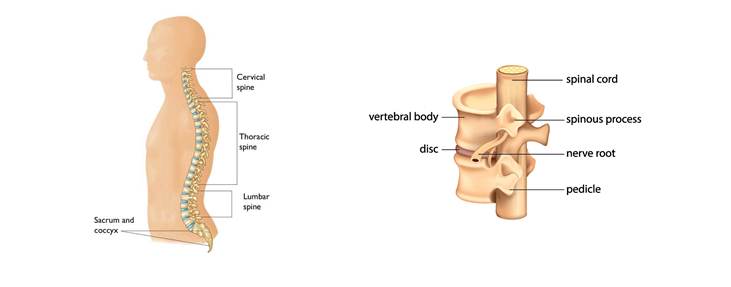14 Aug Working from home a pain in the neck?
Since you’ve been working from home have you experienced a pain in the neck? Although this is a common complaint, we have definitely have been helping an increased number of clients suffering with neck pain this year. This blog highlights some common conditions we treat and what causes neck pain.
What is neck pain?
Neck pain refers to pain that can be experienced in the neck or upper thoracic region (across the tops of the shoulders), or it can refer into the upper limbs or head (headache). This pain is often accompanied by reduced range of motion. Neck pain can be recurrent and debilitating, with numerous episodes over the lifespan.

Anatomy
Listed below are a number of anatomical structures within the neck that can be sources or causes neck pain. Often numerous structures can be implicated at the same time.
- Joints on either side of your spine (facet joints)
- Discs
- Muscles
- Ligaments
- Nerves

The neck is designed to move, which gives us a wide visual field.
The muscles of the neck must also be strong enough to provide stability to the neck and support the load of the head through a full range of motion.
Ensuring this balance between mobility and stability via regular exercise is important for staying pain-free. This is why sustained undesirable postures and poor exercise habits are two of the most common reasons people develop joint stiffness and muscle tension.
Why are the shoulders and thoracic spine important?
The cervical spine, thoracic spine and shoulder are intrinsically linked and should all be examined as part of a thorough assessment of neck pain. Mobility of the upper thoracic region is important because it contributes to neck rotation. Muscles of the shoulder blade also attach to the neck region, meaning movements of the upper limb transfer forces to the neck. These neighbouring regions have important implications on range of motion and strength of the neck, and therefore may need to be addressed.
What causes neck pain?
Wry neck
Acute onset of neck pain and reduced range of motion typically occurring after a sudden quick movement, or upon waking. Prolonged abnormal posture prior to onset of pain can be a cause.
Postural neck pain
Forward head posture is commonly associated with an increased mid-back curve and the shoulders rounding forward. This can occur in standing and sitting.

This posture increases the strain on the muscles at the base of the skull to maintain a forward gaze. It can also increase pressure on joints within the cervical spine – leading to stiffness and pain.
Commonly forward head posture can result from a poor ergonomic setup. For more information on ergonomic setup related to neck pain, click HERE.
Cervicogenic headache
Due to overlap of the nerve pathways from the upper cervical segments and head/face, discomfort originating from the neck can also manifest as a headache.
Whiplash/concussion
This involves an acute acceleration/deceleration injury commonly caused by motor vehicle accidents. A similar mechanism can also occur in sports and can lead to concussion. Further details on concussion will be provided in a later blog.
Diagnosis
Diagnosis is made via a thorough history and understanding of your symptoms, physical examination and identification of underlying sources of pain. These sources of pain could include your workplace set-up, sleeping & exercise habits, or biomechanical limitations. Imaging (e.g. X-ray or MRI) is used only sparingly to help rule out a more serious condition.
Treatment
Treatment will vary depending on your diagnosis and individual circumstances. A comprehensive approach will target reducing symptoms, restoring movement (muscles and joints), improving strength and addressing all contributing factors that lead to your neck pain.
Some common treatments include:
- Massage
- Joint mobilization/manipulation
- Dry needling
- Movement exercises and stretches. For some general mobility exercises to help ease neck pain, READ HERE .
- Strengthening exercises for the neck, shoulders and upper back
- Posture education and correction
- Ergonomic assessment and education
- Medications (pain medications, anti-inflammatory)*
*NOTE: Medications should be used for the short-term and you should always consult with your GP prior to taking any medication to ensure this is safe for you.
Our Physios are highly skilled in assessing and treating what causes neck pain. During Stage 4 Lockdown we strongly suggest you book a telehealth consult initially with a physiotherapist. This will help determine your best course of action and if a face-face consult is necessary. You can book ONLINE HERE.


